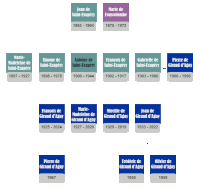36 exceptional books
| PP-4261 This book was authographed by Marie de Fonscolombe, Saint-Exupery's mother. |
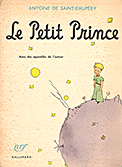
|
|
| PP-2159 This book was entirely written by hand. The color drawings are also hand made. Also note the beautiful wooden box covered in silk cloth. |
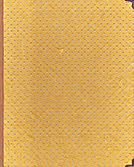
|
|
| PP-2156 The 1030 pages of this book contain the complete works of Saint-Exupery and as well as beautiful watercolors. It was printed in only 15'350 copies. |
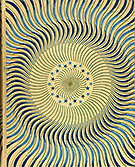
|
|
| PP-0611 This book, printed in only 5'000 copies, contains color photographs of 30 paintings by 30 different artists who each gave their vision of The Little Prince. |
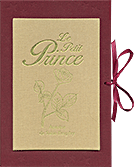
|
|
| PP-0904 Published by the French Post Office, this book contains five stamps of three French Francs each. They are illustrated with the main drawings of the book. There is also a separate sheet with the five stamps to detach. |
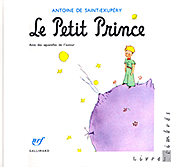
|
|
| PP-2158 This edition contains seven large format lithographs by Rufino De Mingo, numbered 1 to 20. |
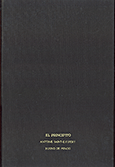
|
|
| PP-1205 Here is the soft cover edition without a jacket of the original edition published in 1943. The price of this book was set at $ 1.50, as illustrated by the document below published by Brentano's bookstore. |

|
|
| PP-2148 The French text has also been printed on the pages of this Braille edition in three volumes. This makes this book an ideal tool for teaching the Braille script. The drawings are also in relief. |

|
|
| PP-0694 This book was autographed by François de Giraud d'Agay who is both the nephew and the godson of Antoine de Saint Exupery. |
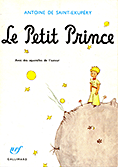
|
|
| PP-1084 Several announcements and advertisements were published with the title "Princeps Parvus" before Artemis & Winkler in Mannheim published this edition in Latin; but the book was finally released with the title "Regulus". It is therefore unnecessary to seek the edition "Princeps Parvus" because it was never published. |
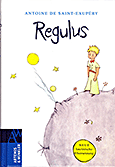
|
|
| PP-0774 This is the only book where the Little Prince is pictured as a little black skinned fellow. |
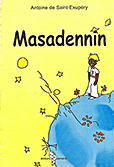
|
|
| PP-0585 There is no mention of a Turkish "dictator" in chapter IV of this edition. The sentence "a Turkish dictator made a law that his subjects, under pain of death, should change to European costume" was translated as follows: "Thank God that Turkey has a good president and that the people may dress in European fashion." |
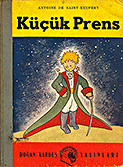
|
|
| PP-2707 Sanskrit is a language once spoken in the Indian subcontinent. Today, some scholars still use it and publish academic works or hold seminars in it. Sanskrit is also the language of the Hindu religious texts as well as of the literary or scientific ones which means that it continues to be used as a cultural language. Here are two texts (available in French only) on the "making of" the translation of The Little Prince in Sanskrit where the problems of adapting the text are discussed. The first is written by Gopabandhu Mishra, the translator of The Little Prince in Sanskrit, and the second by the orientalist Pierre-Sylvain Filliozat. |
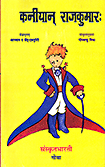
|
|
| PP-0913 The Little Prince was first published in Hungarian in 1957 in Budapest. But in 1958, the Communist government banned the sale of the book by a decree which reflects the ideological resistance of these times: "This book may spoil the taste of our children. We live under a socialist regime and this system requires that our children, who are the people of tomorrow, keep both feet on the ground. Nothing should distort the image they must have from life and the world. In order to achieve this, it is not enough to only spare them the stupidity of religious education. When they turn their heads to the skies, they should not look for God and angels, but for Sputniks. Let's preserve our children from the poison of fairy tales like the absurd and morbid nostalgia of The Little Prince which yearns so foolishly for death." The Hungarian translation will not be available in Hungary until 1970 anymore. However, an edition in Hungarian becomes available in Cologne (Germany) in 1958. |
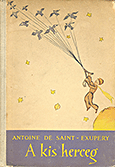
|
|
| PP-2846 This limited edition, not for sale, was published in commemoration of the 70th anniversary of the first publication of the book in the United States; box in a box, it contains a replica of the Fifth printing and a facsimile of the original manuscript. |
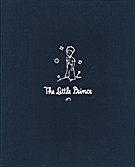
|
|
| PP-2894 This edition is signed by Léon Werth, Saint-Exupery's best friend to whom The Little Prince is inscribed. |
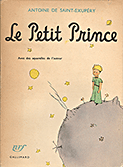
|
|
| PP-3134 This beautiful edition in a box, designed for the blind and visually impaired, does not contain the full text but 23 double pages with excerpts of the text, in French Braille and English Braille, corresponding to the 23 chapters of the book. Each double page features an embossed drawing. One of the prefaces is signed by Alban Ceriser, the archivist and main secretary of the Editions Gallimard who - among others - wrote "Once Upon a Time there was… The Little Prince". While referring to the famous phrase "One sees clearly only with the heart, the essential is invisible to the eye", Cerisier states that St-Exupery "was a little wary of language, the source of so many misunderstandings" and that he entrusted his watercolors with "the task of relating his enigmatic encounter". This exceptional art book can be ordered from ARRIMAGE. |
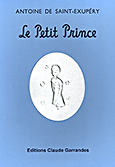
|
|
| PP-3167 This edition is commented, page after page, with excerpts from the Bible. |
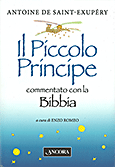
|
|
| PP-1252 This edition was published in Argentina. A Hungarian immigrant founded the Kárpát Editions in Buenos Aires in 1950. The publishing house lived essentially off donations before being transferred to Cleveland, OH - USA. |
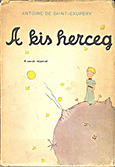
|
|
| PP-2113 Much ink has been used to determine whether The Little Prince was a book for children, teenagers or adults. In 1950 already, publishing house Karl Rauch found it useful to mention this quotation from Prof. Martin Heidegger on the book jacket: "This is not a book for children, it is the message of a great poet who frees us from all earthly solitude and brings us closer to solving the great mysteries of the world" |
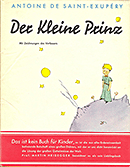
|
|
| PP-0967 Full version of The Little Prince adapted for both the blind and the sighted. It is one of the 14 copies in Spanish/American Braille script, grade 2, which was handmade by an inmate in a Buenos Aires province prison during the year 2009. Some of Saint-Exupery's drawings were recreated in cloth or EVA foam rubber with relief, which allows "reading" by touching the illustrations. The book was also bound in the same prison using cardboard and waste materials. The editor Javier Merás comments the project as follows: "This project had ups and downs and demanded great patience. Every month, all the needed material was sent to the prison: pens, glue, thread, cardboard, sticky tape, cloth, color paper, etc. However, these items did not always reach their adressees because the inmates were frequently moved throughout the country from one penitentiary to another. This unfortunately did not help the continuity of the project either and several books remained unfinished. The Argentinian prison system is also not yet very keen on supporting these kind of long-term social reinsertion schemes." "The extreme circumstances in which each of these Argentinian Little Princes saw the day of light make us the participants in a story of redemption. It is one of these stories that happen all the time but of which nobody ever hears about." |
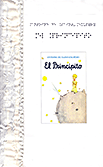
|
|
| PP-3900 Limited edition of 50 copies with original drawings by Alicia Cuerva. The hand-painted hard covers were designed by Anna Nova and Wellington Melo on recycled cardboard purchased from cardboard collector Liga Cartonera. Grafic design by Patricia Cruz Lima for publisher Mariposa Cartonera in Recife, Brazil using the Absara font created by Xavier Dupré. |
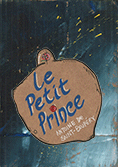
|
|
| PP-3974 Because a picture says more than thousand words, Saint Exupery decided to illustrate the Little Prince with his legendary watercolors. This edition brings together the artworks of several dozen different artists who all were inspired by the text of the Little Prince. |
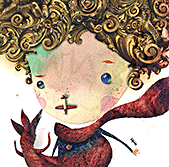
|
|
| PP-3999 This 1969 edition was given to me in 1970 by Jean-Claude Rossier, a teacher at Maya-Joie (a mountain boarding school where I spent part of my youth). It was my first Little Prince. A year later Jean-Claude Rossier entered the Congregation of Canons of the Great Saint Bernard and he was ordained a priest in 1977. He joined the Little Prince in the stars at the end of 2015. |
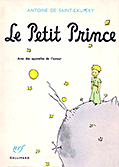
|
|
| PP-4267 This is an inbook in Italian. It is a book entirely illustrated with Widgit symbols as used in Augmentative and Alternative Communication. Augmentative and Alternative Communication (AAC) is an umbrella term that encompasses the communication methods used to supplement or replace speech or writing for those with impairments in the production or comprehension of spoken or written language. AAC is used by those with a wide range of speech and language impairments, including congenital impairments such as cerebral palsy, intellectual impairment and autism, and acquired conditions such as amyotrophic lateral sclerosis and Parkinson's disease. AAC can be a permanent addition to a person's communication or a temporary aid. |
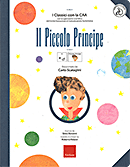
|
|
| PP-4608 This bilingual Even / Russian edition is richly illustrated by artist Vyacheslav Fentyajev.The Even language, also known as Lamut, Ewen, Eben, Orich, Ilqan, constitutes, with Evenki and the Neguidal, the northern group of the Tungusic languages and is spoken by the Evens in Siberia. It is used by widely scattered communities of reindeer herders from Kamchatka and the Sea of Okhotsk in the east to the River Lena in the west, and from the Arctic coast in the north to the River Aldan in the south. Even is an endangered language, with only some 5,700 speakers (Russian census, 2010). These speakers are specifically from the Magadan region, the Chukot region and the Koryak region. Where Even functioned primarily as an oral language communicated between reindeer herding brigades, it was transcribed with a modified Cyrillic alphabet around 1925. In the regions where the Evens primarily reside, the Even language is generally implemented in pre-school and elementary school, alongside the national language, Russian. |
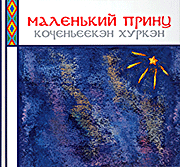
|
|
| PP-4789 In this edition the Little Prince wears the shesh (or tagelmust). It is a kind of scarf about 4 to 8 meters long, worn by Tuareg men and in the desert areas of North Africa in general. Traditionally, men wrap it on their head and face, to protect themselves from the sun and dry wind of the desert. |
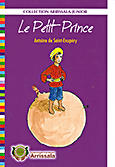
|
|
| PP-5049 This book was autographed by Gabrielle de Giraud d'Agay, the sister of Antoine de Saint Exupery. |
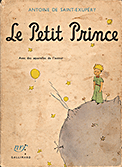
|
|
| PP-5044 This book is in Arabic only, but transliterated into Hebrew characters for educational purposes. Many children and young people in Israel learn Arabic as a third language, after Hebrew and English. The promoters of this special Israel-Arabic edition are two Israelians: Adi Babik and Nadav Goldenberg. It was sponsored by the “Association for the Promotion of Arabic Language Learning in Israel”. The included CD-168 was prepared by Yuval Amit. |
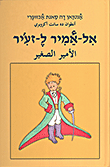
|
|
| PP-5225 This Chinese edition adapted by Hoanyang, published in 1989 by Sichuan Shaonian Ertong Chubanshe, is illustrated by the famous artist Zhang Xiaogang. |
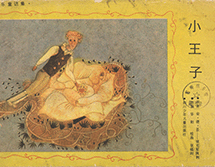
|
|
| PP-5333 This edition of THE LITTLE PRINCE in Balinese has the particularity that the words "The Little Prince" are different in the title of the book (Raja Cenik) and in the text (Déwangung Alit). This is a peculiarity of the Balinese language, which has several levels of language, like the Javanese from which it is partly derived: Bahasa Halus, the beautiful language used to speak to priests and people of high status, Bahasa Sandang the more neutral language, and Bahasa Kasar, the language for the common people... These three levels (some linguists even see four) operate on the same grammar and semantic structure, except that the words differ widely, to the point that the understanding between these variants is almost impossible. The title "Raja Cenik" is in the beautiful language ( Bahasa Halus ) - it is the function of the prince which is highlighted - and therefore used here only for the title of the book. In the text, the Little Prince takes his name "Déwangung Alit" in neutral language. |

|
|
| PP-6100 Copy of the 3rd edition of the first edition having belonged to Mrs. Suzanne de Kervérsan, born Suzanne Bru, which was given to her father in Algiers by Henri Laugier, who had it from Saint Exupéry. Suzanne Bru received it in September 1944. This copy shows that Saint Exupéry received from his New York publisher the receipts of the new printings. Copy given to an unidentified person with this letter in 1983 here is an extract:
Et comme le Recteur, Henri Laugier, n’était presque jamais là, (bien plus souvent au Canada auprès de « sa » femme) mon père et le vice-Recteur et ami de mon père faisaient son travail et rencontraient les… Saint Ex. par exemple.
Un jour Saint Ex. excédé par les refus de de Gaulle de faire publier « Le Petit Pince » en Algérie, a porté un exemplaire édité aux USA à Laugier. Laugier l’a lu, l’a donné à mon père qui me l’a donné (mais combien de semaines cela a-t-il pris ? Je l’ignore, car ne pensais qu’à réussir mon bac…) Voici cet exemplaire. Il était enveloppé d’un papier blanc, le Petit Prince en gris s’élevait vers sa planète au milieu d’astres jaunes. Mais 27 déménagements en ont fait de la charpie… Je crois que le plus grand hommage que je puisse faire à la famille de Saint Ex est de le lui offrir par votre intermédiaire. Cela ne me prive pas: je connais chaque page par cœur ! |
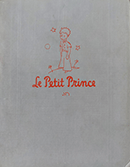
|
|
| PP-6017 In this edition in Chakavian Croatian, the Little Prince speaks in the Rijeka dialect, but the other speakers speak in different dialects. These are the dialects of other regions of Croatia. The dialects spoken by the pilot, the rose, the businessman, the fox, etc. are listed at the beginning of the book:
|
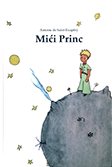
|
|
| PP-6454 Adaptation in which the fox is a Zaguate dog. The Zaguate territory is a paradise for stray dogs in Costa Rica. |
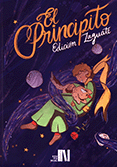
|
|
| PP-2247 This translation into Ticinese was given to me in 2006 by my three sons Luca, Nicola and Andrea for my 50th birthday (photo). It remained unique until 2008 when I contacted the "Istituto Editoriale Ticinese" who accepted to publish it.
|
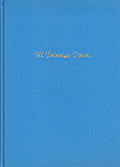
|
|
| PP-7021 This edition was illustrated with 63 drawings by 63 different artists |
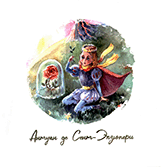
|
|

